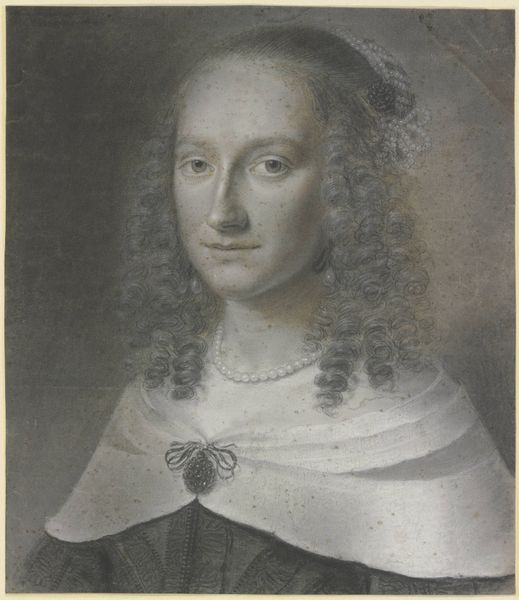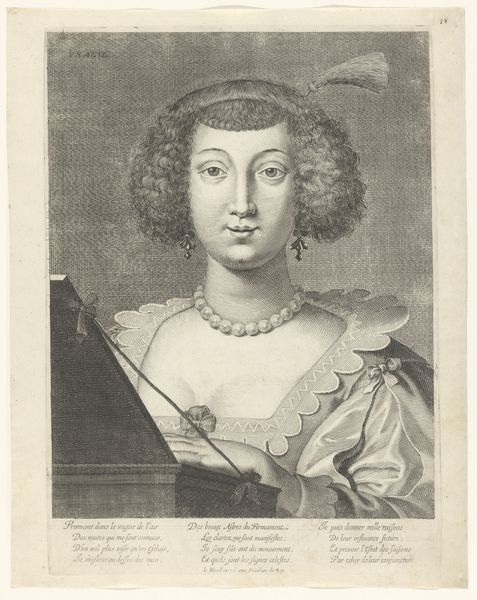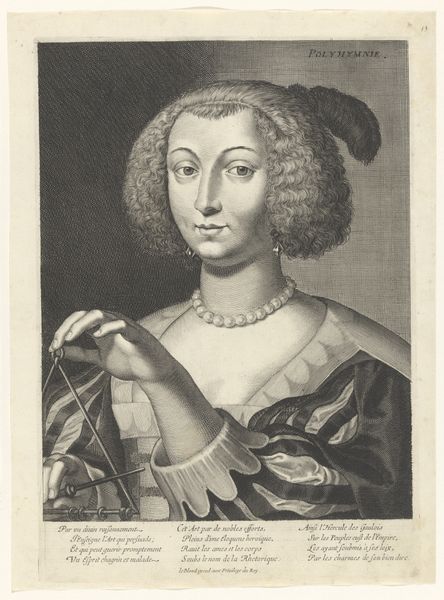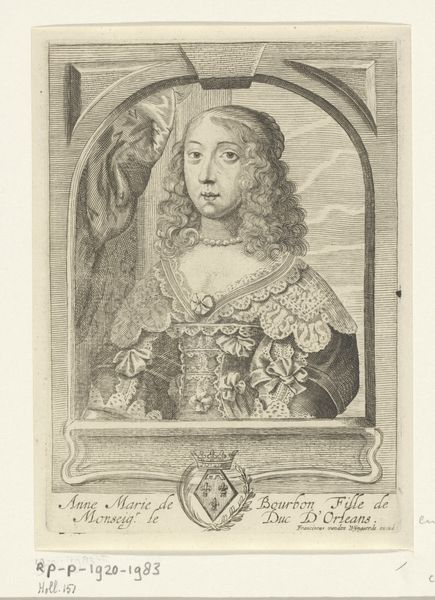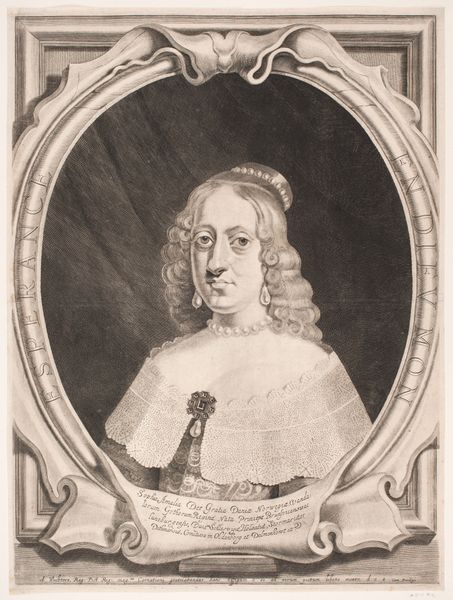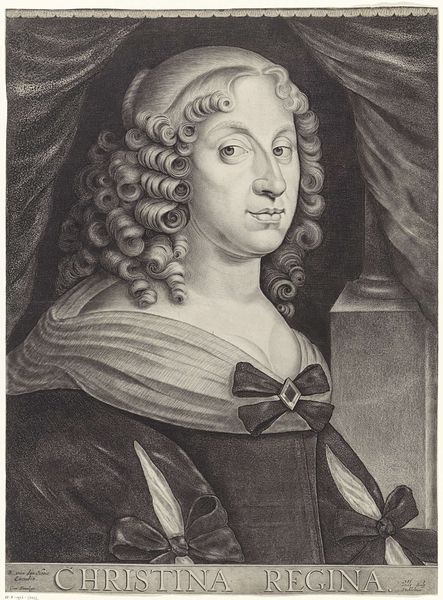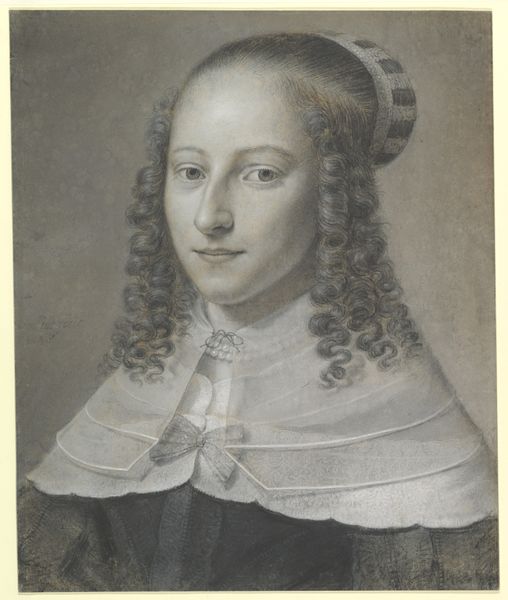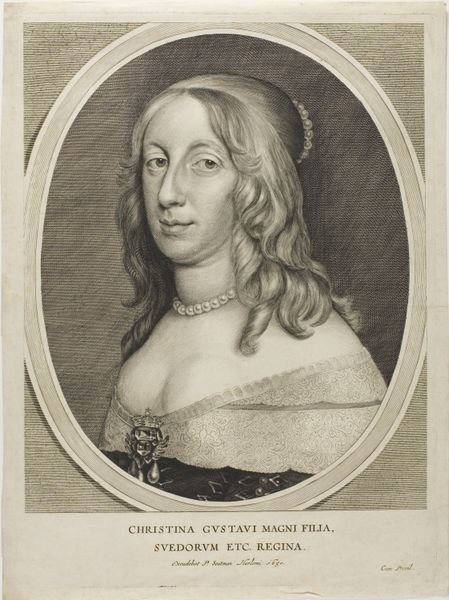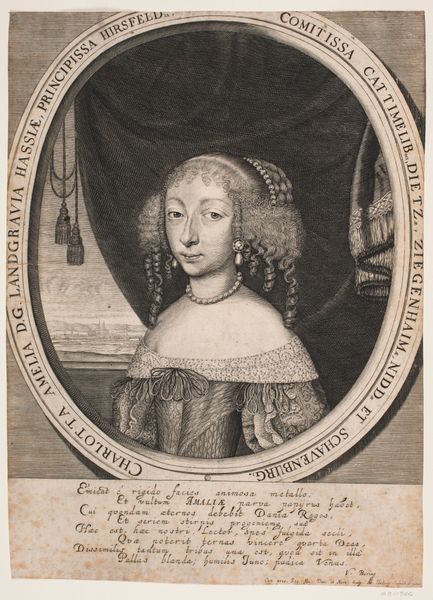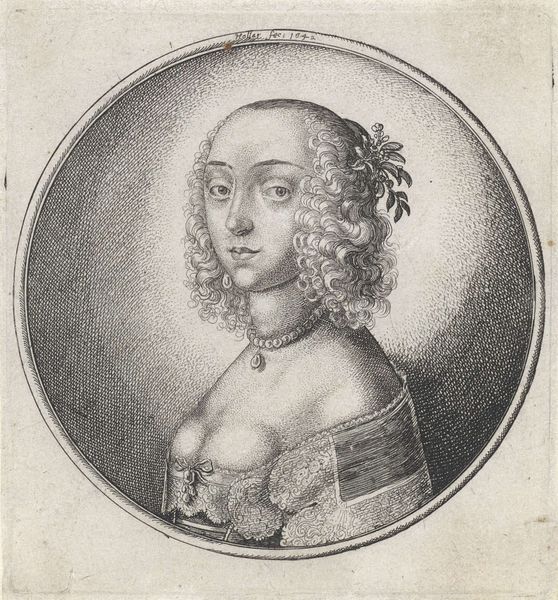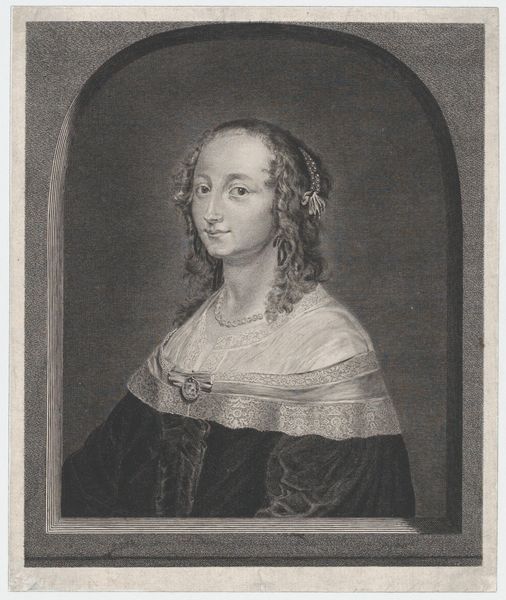
print, engraving
#
portrait
#
baroque
# print
#
engraving
Dimensions: 267 mm (height) x 200 mm (width) (bladmaal)
Curator: Ah, here we have Albert Haelwegh's engraving, a portrait of Sophie Amalie. It's estimated to have been made sometime between 1655 and 1659 and is a piece held here at the SMK, Statens Museum for Kunst. Editor: Well, my first thought? Those curls! They look like coiled springs! And, honestly, there's a certain vulnerability in her expression, isn't there? Like she's not entirely comfortable in the spotlight. Curator: That's a keen observation. Portraits of this era were powerful statements, meant to project an image of authority and dynasty. But consider who Sophie Amalie was: a powerful queen consort who defied expectations and played a significant role in shaping Danish politics. To see that fragility hints at the pressures and expectations placed upon her as a woman in power. Editor: It's almost like a whisper beneath the royal presentation. The engraver’s captured that nuance... Look how the light catches on her pearl necklace; it seems to emphasize the curve of her throat, making her appear both regal and exposed. Curator: Haelwegh's skill truly shines through. The baroque style emphasizes opulence and grandeur but doesn't completely mask the individual. Think about the conventions of the time period; portraits were often commissioned to solidify power and legitimacy. But in examining Haelwegh's piece we need to ask what function it fulfilled and what sort of symbolic claims about royalty or the monarchy were at play. What visual strategies, for instance, does the portrait exploit to establish and express the importance of the queen? Editor: It also makes me wonder about Sophie Amalie's personal agency, doesn’t it? How much control did she really have over her own image? Were portraits like this pure propaganda, or could she influence how she was presented to the world? There is so much here under the surface! Curator: Precisely! And it's that tension between public persona and individual identity that makes this engraving so compelling, inviting us to think critically about the lives of powerful women in history and what stories these portraits carry in relationship to them. Editor: Absolutely! It is nice to spend time with old artworks like these. So, yeah, give me rebellious ringlets and subtle resistance over stiff formality any day. This really is worth studying.
Comments
No comments
Be the first to comment and join the conversation on the ultimate creative platform.
